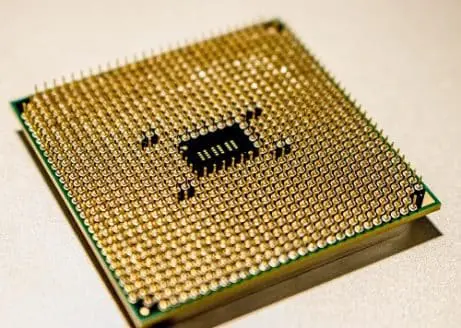With the world facing a considerable semiconductor microchip shortage, we take a look at the causes and effects of the shortage plus some potential solutions.
Why Is This Important?
Microchips are now included in virtually everything from watches to white goods and crucially in larger, high demand, big industry items such as cars. Many products have more than one chip and as the IoT market expands, so does demand for more microchips.
Why The Global Shortage?
The global shortage of semiconductor microchips has been caused by a ‘perfect storm’ of many factors. These include:
– Car manufacturers are huge users of semiconductors. The COVID-19 pandemic, the associated slump in demand, and 50 percent slump in car sales, however, caused car manufacturers to slim down in manufacturing which, in turn, caused the semiconductor industry to operate at a much-reduced capacity, thereby reducing supply output.
– Microchip producers switched to smartphone, laptop, and tablet chips in response to a surge in demand due to remote working because of the pandemic, thereby disrupting chip markets.
– Manufacturers of semiconductor microchips, which require huge investment in plants over many years, tend to operate with low stock levels to minimise costs. The surge in demand for chips (particularly for cars) coming out of the first COVID lockdowns, therefore meant there were no backup supplies, chip manufacturers would need time to adapt to switch back to car chips, and manufacturers could not meet demand.
– 780 semiconductor manufacturing plants in the US have been closed over the last 20 years whilst production was moved overseas. This left the US with little backup for chips following the COVID years.
– With most chips being manufactured in Taiwan, the US trade war with China during the Trump administration caused supply problems due to sanctions (e.g. US chip firm Xilinx having to stop supplying to China, and Huawei being put on a trade blacklist).
– There was significant under-investment in 8-inch chip manufacturing plants owned by Asian companies. Also, most of the production in Asia is concentrated into the Taiwan Semiconductor Manufacturing Co Ltd (TSMC) and Samsung, who manufacture on behalf of hundreds of other different chip companies.
– Weather and other events disrupted supply and worsened the global shortage of semiconductor microchips (e.g. droughts in Taiwan – water is needed in chip production), winter storms in February shutting-down the NXP semiconductor plant in Texas, and a fire at the AKM semiconductor plant in Nobeoka, Miyazaki, Japan (October 2020). The AKM factory (owned by Renesas Electronics Corp), for example, accounts for a massive 30 per cent of the global market for the microcontroller units used in cars.
The Impact
Examples of some of the main impacts caused by the global shortage have been:
– Massive disruption, damage to profits, and job losses in the car industry and in car supply chain businesses. For example, Ford, Toyota, and VW partially mothballed factories and car manufacturers produced fewer of their less profitable vehicles.
– Phone manufacturers have delayed model releases. This has affected the phone companies’ profits and competitiveness and has had a knock-on in phone retail businesses.
– There have been games console shortages, which were compounded by an increase in demand over lockdown. For example, Microsoft faced production challenges with Xbox Series X/S. This also produced a knock-on effect for games console retailers.
– There have been Knock-on effects into the development of 5G networks (e.g. in the UK and US).
– The semiconductor industry is fragmented with many companies having similar, small amounts of market share, with no single company controlling every application. This has meant that manufacturers have been struggling to get all the components and materials for any one system, thereby disrupting production.
Possible Solutions
The main solution to tackling the global shortage has been for countries to implement the costly and time-consuming measures of setting up their own semiconductor microchip factories to try and guarantee at least some increased level of supply, and to reduce reliance upon countries with whom there may be a difficult relationship.
In July this year, for example, the US Senate voted across party lines to pass the “CHIPS plus” bill which will deliver $52.7 billion for domestic chip manufacturing and research subsidies. It will also mean $2 billion extra for less advanced legacy chips.
Also, US sanctions forced China to start investing heavily in its local tech companies such as Zhaoxin, Huawei, and SMIC to help deal with the shortage.
These developments will take time, and with most of the last year’s output already sold, it is anticipated that the shortage and many of its effects may carry on for this year and longer.
More Concerns
There are additional concerns over possible semiconductor supply issues such as:
– Most of the world’s semiconductors are produced in factories in Taiwan and South Korea, and with China’s apparent threat to Taiwan, this could affect supply.
– The UK launched an inquiry into the semiconductor industry and the UK government has delayed a decision about whether the UK’s largest producer of semiconductors, Newport Wafer Fab, can be bought by a Chinese-owned manufacturer. This is partly due to worries over the security of chip designs used in UK defence projects.
What Does This Mean For Your Business?
For any businesses that require semiconductor microchips for manufacturing, or for business that supply and sell goods and devices that include these chips, the last few years have been precarious with production supply shortages and production delays. The near future still holds uncertainty and potentially damaging disruption and shortages which could continue to impact upon operational decision-making, hit profits, and have a negative impact across supply chains. There are now worries over China’s potential threat to Taiwan and how that would affect supply if the worst happened, but the US has now passed legislation to enable a serious ramping-up of the semiconductor manufacturing industry there, although building the plants will take time. Also, Japan and the EU have recently been investing in and expanding their facilities to try and tackle supply problems. For example, Intel is to spend €33 billion in mainland Europe on semiconductor research and manufacturing, which could (in 5 years) go some way to helping reduce reliance on chip manufacture in Asia, although Intel has also urged the UK to develop a microchip strategy which Intel’s boss says the UK lacks, and which could leave the UK at a disadvantage in chip supply going forward. The near future is, therefore, still uncertain as regards semiconductor supply and how that may affect UK businesses, but it is likely that there will be a few more bumps in the road over the next few years.


